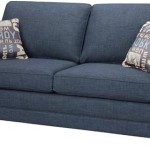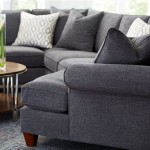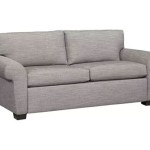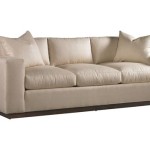Sofa Protector Cover: Waterproof Defense for Your Upholstery
Sofa protector covers, particularly those with waterproof capabilities, represent a practical investment for homeowners seeking to extend the lifespan and maintain the aesthetic appeal of their upholstered furniture. These covers act as a barrier against a multitude of potential hazards, ranging from accidental spills to pet-related mishaps, effectively safeguarding the underlying fabric from damage and staining.
The primary function of a waterproof sofa protector cover is to prevent liquids from penetrating the fabric and reaching the sofa's padding. This is crucial for preventing stains, mold growth, and unpleasant odors that can result from persistent moisture. By creating a liquid-resistant shield, these covers offer a significant advantage over traditional sofa covers that may only provide basic protection against dust and wear.
Beyond protection against liquids, waterproof sofa covers also contribute to the overall hygiene of the living space. They can prevent allergens, such as dust mites and pet dander, from settling into the sofa's fabric, making them particularly valuable for individuals with allergies or respiratory sensitivities. Regular cleaning of the cover, which is often machine washable, further enhances its hygienic benefits.
The availability of waterproof sofa covers in a wide range of sizes, styles, and materials allows homeowners to find a solution that complements their existing décor. From fitted covers that conform to the sofa's shape to loose covers that offer a more relaxed look, the options are plentiful. The choice of material, such as polyester, microfiber, or even specialized waterproof fabrics, influences the cover's durability, comfort, and ease of maintenance.
The Importance of Waterproofing
The waterproof characteristic of a sofa protector cover is arguably its most important feature. Without it, the cover simply acts as a superficial barrier, offering limited protection against liquid spills and accidents. A truly waterproof cover utilizes a specialized membrane or coating that prevents liquid from soaking through the fabric.
This waterproofing is typically achieved through the application of a polyurethane (PU) coating or a similar waterproof layer to the underside of the cover fabric. This layer acts as a barrier, preventing liquids from penetrating while still allowing the fabric to breathe to some extent. The breathability is important to prevent the build-up of moisture and condensation underneath the cover, which could lead to mold or mildew growth.
The effectiveness of the waterproofing is dependent on several factors, including the quality of the coating, the type of fabric used, and the construction of the cover. Covers with multiple layers and reinforced seams offer enhanced protection against leaks and tears. It's essential to carefully examine the product specifications and read customer reviews to assess the cover's actual waterproofing capabilities.
It's also important to note that while a sofa cover may be described as "waterproof," it's possible that prolonged exposure to large quantities of liquid could eventually result in some seepage. Therefore, it's generally advisable to wipe up spills promptly to prevent any potential damage to the sofa underneath.
Selecting the Right Material
The material of a waterproof sofa protector cover significantly impacts its performance, durability, and aesthetic appeal. Several materials are commonly used, each with its own advantages and disadvantages.
Polyester is a popular choice due to its affordability, durability, and resistance to wrinkles and fading. Polyester covers are typically easy to clean and maintain, making them a practical option for households with children or pets. However, polyester may not be as soft or luxurious as some other materials.
Microfiber, a type of polyester fabric, offers a softer and more plush feel than standard polyester. Microfiber covers are known for their excellent stain resistance and durability. They are also less prone to pilling and snagging, making them a good choice for high-traffic areas. However, microfiber can sometimes attract pet hair and dust.
Cotton is a natural fiber that is soft, breathable, and comfortable. Cotton covers are often preferred for their natural feel and aesthetic appeal. However, cotton is more prone to staining and wrinkling than synthetic materials. It may also require more frequent washing and may not be as durable as polyester or microfiber. To achieve waterproofness, cotton covers typically require a waterproof backing or treatment.
Specialized waterproof fabrics, such as those treated with a durable water repellent (DWR) finish, offer superior water resistance and durability. These fabrics are often designed specifically for upholstery and are engineered to withstand heavy use and repeated washing. However, they may be more expensive than other options.
When selecting a material, it's important to consider the specific needs of the household, including the presence of children or pets, the level of traffic the sofa receives, and the desired aesthetic.
Proper Installation and Maintenance
The effectiveness of a waterproof sofa protector cover is also contingent on proper installation and maintenance. A poorly fitted cover may not provide adequate protection, while neglecting regular cleaning can diminish its hygienic benefits.
Installation typically involves draping the cover over the sofa and securing it in place using straps, elastic bands, or tuck-in flaps. The instructions provided by the manufacturer should be carefully followed to ensure a snug and secure fit. It's important to choose a cover that is appropriately sized for the sofa to avoid gaps or wrinkles that could compromise its protective capabilities.
Regular cleaning is essential for maintaining the cover's hygiene and appearance. Most waterproof sofa covers are machine washable, but it's important to check the care instructions before washing. Use a mild detergent and avoid using bleach or fabric softeners, as these can damage the waterproof coating or fabric.
The frequency of washing depends on the level of use and the presence of children or pets. In general, it's recommended to wash the cover every few weeks or as needed to remove dirt, dust, and spills. Promptly cleaning up spills or stains is crucial to prevent them from penetrating the fabric and reaching the sofa underneath.
In addition to washing, regular vacuuming can help to remove dust, pet hair, and other debris from the cover. Using a soft brush attachment can prevent scratching or damaging the fabric. For stubborn stains, spot cleaning with a mild detergent and a soft cloth may be necessary.
By following these installation and maintenance guidelines, homeowners can maximize the lifespan and effectiveness of their waterproof sofa protector covers, ensuring that their sofas remain protected and aesthetically pleasing for years to come.

Sofa Protector Covers Waterproof Non Slip Reversible Oxford

Pet Protector Couch Cover Waterproof Furniture Protection With Nonslip Straps 3 Cushion Sofa For Dogs Cats Or Kids By Petmaker Gray Target

Waterproof Sofa Covers Pet Protector Reversible Couch Cover Black Grey Yorkshire Bedding

Sanmadrola Waterproof Couch Cover L Shape Sofa Covers Chaise Lounge Slip Reversible Furniture Protector For Pets Kids Children Dog Cat Bluish Grey Xl Com

Multicolor Tpu Laminated Spandex Fabric Waterproof Sofa Cover

Sofa Protector Cover Reversible Waterproof Anti Slip Brown Beige Imperial Rooms

Waterproof Pet Sofa Protector Best

Water Resistant Sofa Covers Waterproof Quilted Throw Pet Protector Couch Cover

Waterproof Stretchable Spandex Couch Covers Universal Jacquard Miracle Elastic Sofa Chair Special Fashion

Sofa Protector Cover Reversible Waterproof Non Slip Cream Beige








